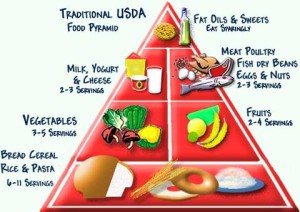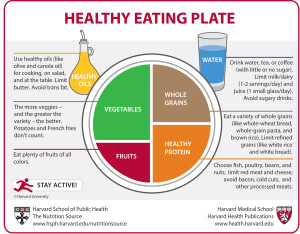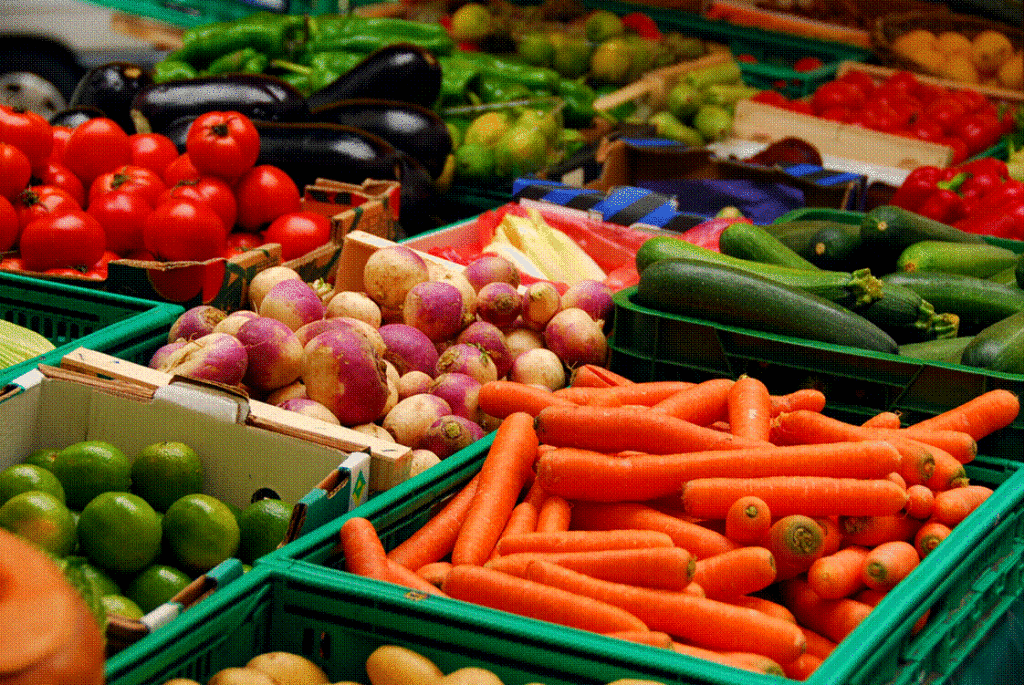
Since Sadie and Safiyah brought the question of What’s On Your Plate? to the world in 2009, a lot has changed – both in their lives and in the communities they sought to engage and inspire. In 2012, the two friends received The William F. Ryan Community Health Network Award for community service based on their work with What’s On Your Plate?. In addition, they were each invited by Ramin Ganeshram (professional chef and writer) to submit recipes for a cookbook featuring chefs under 18; the book, entitled Future Chefs, is scheduled to be released later this year. Also, they’re both still vegetarians!
 |
 |
| Figure 1 – Then |
Figure 2 – Now |
There have been some national changes that give a sign that the U.S. is headed on the right track as well! Since 2009 people all across the country have been asserting our right to healthy food and using our voices to demand changes in food politics. The results are clear! One of the major changes in policy lies in the updated food diagram. We used to have a pyramid that recommended portions that were way beyond how much a person should be consuming, and made it seem like wheat was the most important food group to consume. Now we have a plate diagram that provides a more accurate look at what we should be consuming and how much. Another important factor is that free lunches with healthy food options are much more prevalent now than they were back in 2009. Since then, New York City has more farmers’ markets and programs have been popping up in low-income areas with high obesity rates. For example, Greenmarket, which is an organization that helps promote easier access to organic foods, and Shop Healthy NYC, a network launched in
June 2012 to provide awareness about areas to acquire good food. That combined with Harvest Home whose mission is to “provide low-income communities with access to farm fresh local produce and … healthier lifestyles” shows an upward trend of healthy, local food becoming more accessible and therefore more easily embraced as an alternative to processed foods. Programs such as Let’s Move! show that changes are not just in NYC, but are being encouraged on a national level. With the administration announcing their move to update food labels for better comprehension and a more accurate representation of what is being consumed, we have something to look forward to in the next few years.

We are seeing the results of these policy changes as reported back in February: children’s obesity has dropped by 43% for first time in decades! In 2007 the CDC found that 70% of obese youths had a risk factor for cardiovascular disease. In addition, obese children between the ages of 2 and 5 are five times more likely to be obese into adulthood – putting them at risk for coronary heart disease, high blood pressure, stroke, type 2 diabetes, cancer, among other diseases. It’s clear that starting kids’ lives off with health consciousness in mind can aid in preventing serious health issues later on in life. So that 43% drop is huge news!
A conversation that was just beginning to percolate in 2009 has become a roar, with more people talking about children’s health and diet, people developing programs that encourage lifestyle changes, as well as communities and organizations working to expand access to healthy foods. By exercising our voices and applying pressure on corporations and government, change is coming about, and this change is something to celebrate. Still, our work isn’t done. According to the CDC, back in 2009 35.7% of adults (20 and older) were obese, while the 2011-2012 survey found that 34.9% of adults were obese. This is a miniscule drop in comparison to the long strides made in regards to childhood obesity. The general population is learning more about healthier lifestyles but any change in diet is a change in routine, so it will still take an encouraging, growing community to create significant alterations – as well as children working to educate their parents and not just vice versa.
As a nation, we still have a long way to go as far as conscious, healthy consumption goes, but recent changes and promises mark the signs for a positive future to come so long as we all continue to support one another and speak up for our right to good food.

